
Rare Varieties
1910 VDB
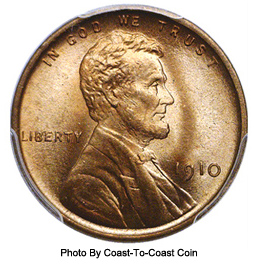
The first 1909 Lincoln cents were minted in August of 1909. These coins had the designer's initials V.D.B. on the bottom of the reverse side. Within one week, the Chief Mint Engraver stopped production and had all working dies with the initials on the reverse removed.
These dies were taken to the metal shop where the initials were all removed and then placed back into service. Some 1910 cents can be found that have traces of the original VDB on the reverse side. It would also stand to reason that some 1909 cents would have very weak or only trace amounts of the original initials left on them.
1922 Plain (No D) Lincoln Cent
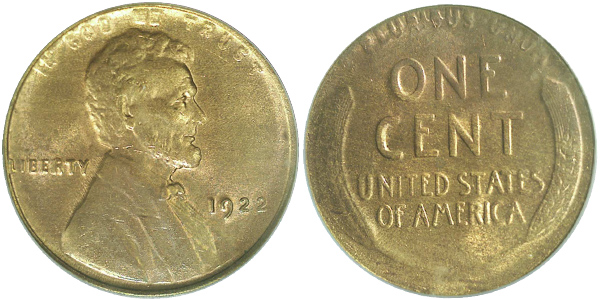
Photo By Heritage Auction Galleries
1943 Bronze Cent
Prior to world war 2, the composition of the Lincoln cent was 95% Copper and 5% Zinc. During the war, these metals were not available to the mint, so they had to search for a substitute. Zinc coated steel was chosen. Starting on February 27, 1943, a low-grade Carbon Steel was used as the base of the coin, coated with a .005 inch thick Zinc coating to prevent rust. By the end of 1943, the three mints combined produced 1.093,838,670 of the new Zinc coated Steel coins. On January 01, 1944, the mint changed the composition by using spent shell casings from the war.
At least 40 known examples exist of 1943 cents that were struck using the pre-war composition. Many speculate that this was because of blank planchets being left in the hopper from the previous year.
1943 Bronze cents have been discovered from all three mints.
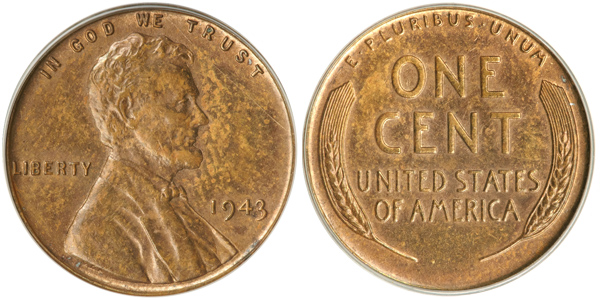
Photo By Heritage Auction Galleries
Examples of 1943-S cents have also been discovered.
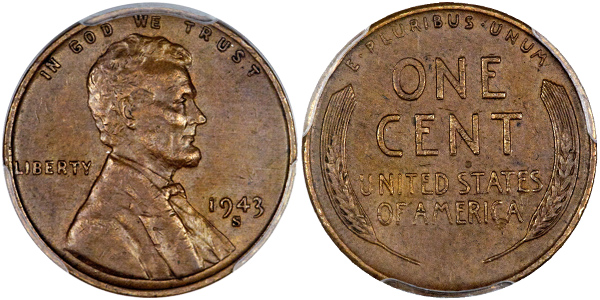
Photo By Heritage Auction Galleries
At least one of these pre-war composition 1943 cents have realized over $1,000,000.00.
If you think you may have found a 1943 Copper cent visit this page.
To learn about the counterfeit 1943 Copper cent visit this page.
1944 Steel Cent
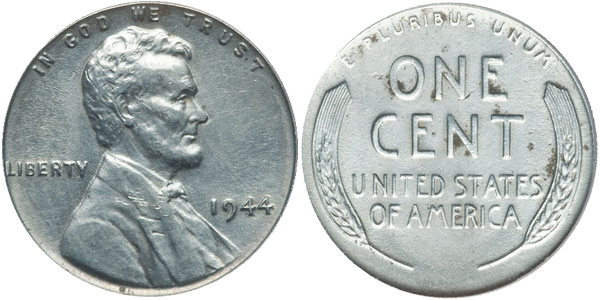
Photo By Heritage Auction Galleries
1944-D Steel Cent
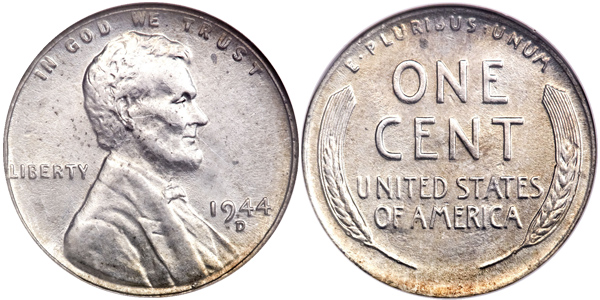
Photo By Heritage Auction Galleries
Similar to what happened with the 1943 Copper cents, a few 1944 Steel cents are known to exist. This could be due to Steel blank planchets being left in the hopper from the previous year or a mix up in planchets, as the US mint was using the same Steel planchets from 1943 to strike foreign coins in 1944.
Genuine 1944 Steel cents are estimated to be worth around $100,000.00.
1944 Experimental Cent
Made with the same dies used to make the regular issue 1944 cents, these coins are thicker than normal and weigh 4.1 grams verses 3.11 grams for a regular business strike Lincoln cent. Struck in Bronze with a plain edge.
Some experts now argue that these are not experimental strikes, but the result of a mint error using stock that was thicker than normal.
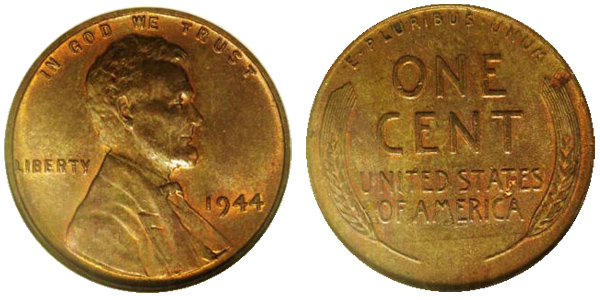
Photo By Heritage Auctions
1956-D Re-Punched Date
Since 1909, the date on US coins has been put onto the master hub or the master die. Prior to that, the date was punched into the working dies and sometimes, like what happens with repunched mint marks, the punch could shift between strikes and cause a repunched date on the coins.
Since the dates are not punched into working dies, there is little, if any, chance of a repunched date since 1908. That makes this variety extremely controversial.
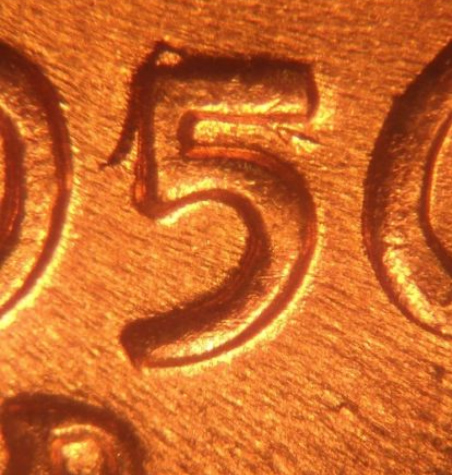
Photos Courtesy of Joe Curry
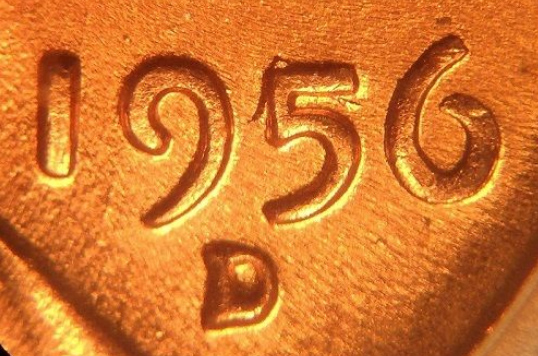
1958 DDO 001
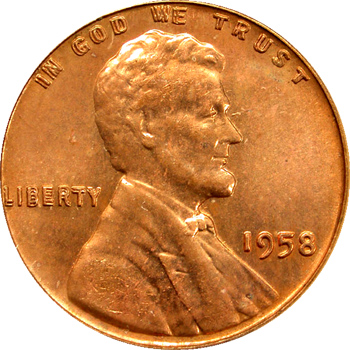
Photo By Coop & CCF
1959-D Wheat Cent
In 1959, the mint changed the reverse design of the Lincoln cent from the wheat ears that had been on the reverse since 1909 when the Lincoln cent was first introduced, to the the Lincoln Memorial. This change marked the 150th anniversary of Lincoln's birth. This reverse design was used until 2008. A new commemorative design was used in 2009, the 200th anniversary of Lincoln's birth. A new design depicting a union shield was used in 2010 and is still in use today.
In 1986, a 1959-D cent turned up with the wheat ear design on the reverse. This coin was eventually sent to the US Treasury Department who examined the coin and said that it was genuine. This coin was to go to auction in 2002, but was pulled because a know forger, Mark Hofmann claimed that he made the coin using the spark erosion process.
To date, no third party grading service will authenticate the coin and it is still considered very controversial.
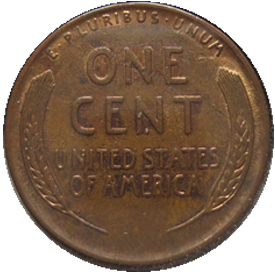
1964 Experimental SMS Cent
These coins weren't discovered until around 1993-1994.
We don't know for sure why these coins were minted but it was most likely the result of the mint's search for an alternative to the proof cents that were not minted from 1965 through 1967. These coins show greater details and sharper strikes than the business strikes of the same year, yet do not have the reflective shine of the proof cents. No one knows for sure how many of these experimental coins were minted, but it is estimated that the number is less than 50. Even though it is believed that the mintage number is very low for these special cents, there are most likely more to be discovered.
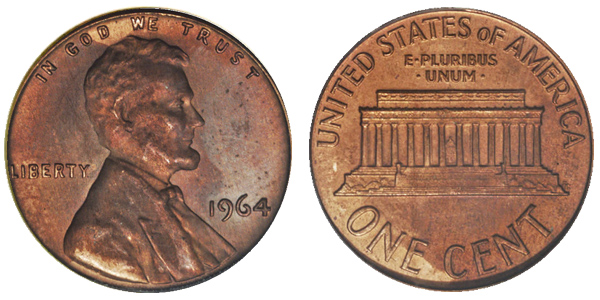
Photo By Heritage Auctions
Die Markers
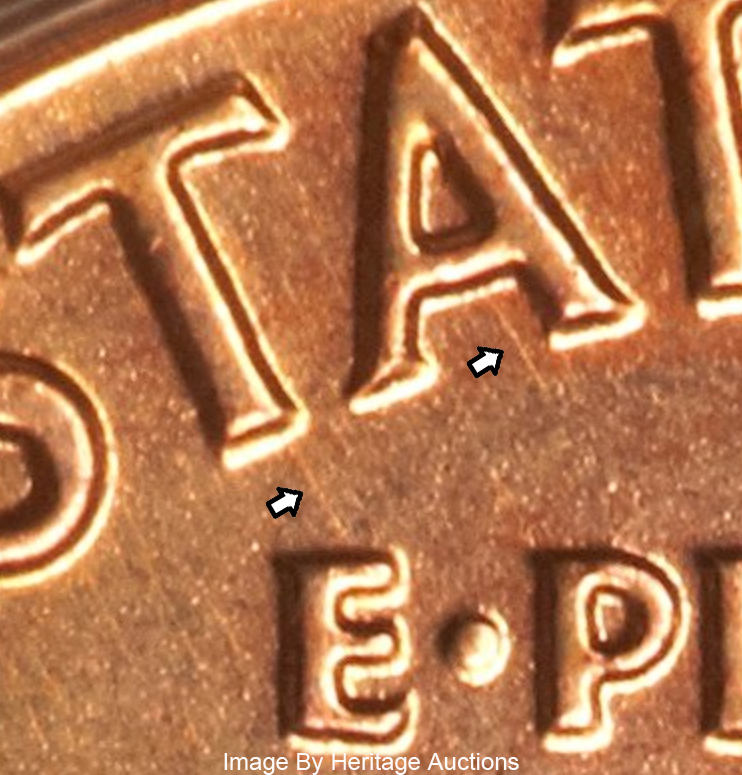
1969-S DDO 001
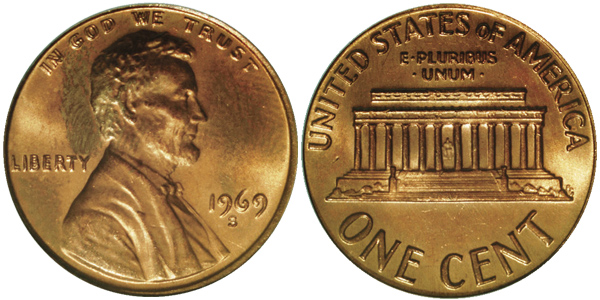
Photo By Heritage Auction Galleries
1970-S DDO 001
Right behind the 1969-S doubled die in rarity, is the 1970-S doubled die. Even in circulated condition, this coin can be worth upwards of $3000.00. A 1970-S doubled die obverse in MS-65 condition has sold for over $7000.00.
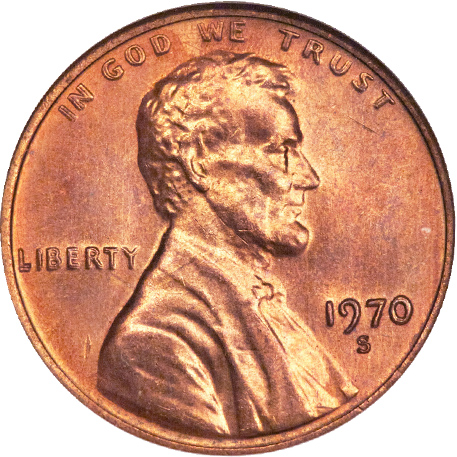
Photo By Heritage Auctions
1974 Aluminum Cent
When a government mints coins, it likes to make a profit. This profit is called Seigniorage, the difference between the cost to mint a coin and the coins monetary value. In 1973, the mint decided to use a new Aluminum alloy for the 1974 cents. This would save the mint money from the more expensive Copper it had been using. 1,571,167 - 1974 dated Aluminum alloy cents were struck. None of these coins were ever released into circulation. Some of these new Aluminum cents were given to US congressmen, but when the new alloy was rejected, the coins were recalled.
The mint destroyed all examples of the 1974 Aluminum cents, but a couple of examples that were not returned to the mint are known to exist. One is in the Smithsonian Institution. Another example turned up in 2014 dated 1974-D. There is a legal battle over who owns the coin, since they were all recalled for destruction.
1974 Bronze-clad Steel Cent
In the search for a new alloy for the 1974 cents, some test pieces were minted on Bronze-clad Steel planchets. All of these were sent to be destroyed but at least one example turned up in 1994.
Since these were sent for destruction by the US mint, they are considered illegal to own.
1975 Aluminum Cent
66 test pieces dated 1975 were struck in Aluminum. Composition: 96% Aluminum with other trace metals.
1982 Small Date Zinc Doubled Die Reverse
This variety shows doubling on "UNITED STATES OF AMERICA", "ONE CENT" and major doubling on "E PLURIBUS UNUM". Doubling can also be found on the Memorial building. Some stages have a small die break on the obverse side, just under the left bar of the "T" in LIBERTY. This variety is the second strongest doubled die reverse know on the Lincoln cent series.
1982-D Small Date Copper
In 1982, the mints issued seven different business strike varieties of the Lincoln cent for circulation, plus a Proof cent for collectors. Copper plated Zinc and Copper cents were both minted in 1982. 1982 large date Copper, 1982 large date Copper plated Zinc, 1982 small date Copper, 1982 small date Copper plated Zinc, 1982 D large date Copper, 1982 D large date Copper plated Zinc, 1982 D small date Copper plated Zinc, 1982-S large date copper Proof. There were no small date Copper cents issued at the Denver mint.
In November of 2016, a collector in Minnisota discovered a 1982-D small date Copper cent while searching a mint bag of 1982 cents.
If you think you may have found a 1982-D small date Copper cent visit this page.
The first coin pictured is a large date, compared to a small date in the second image.
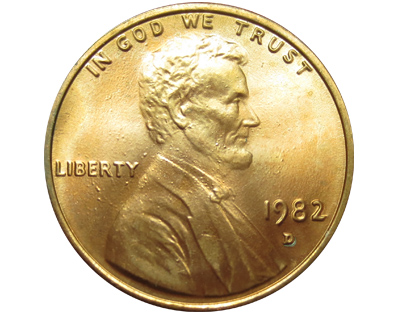
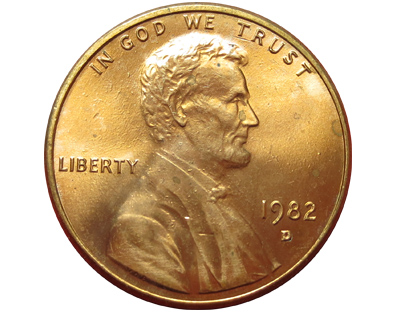
1983 Lincoln Cent Extra Letters In Motto
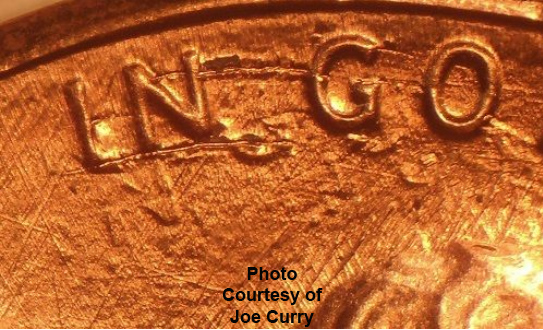
To see more images of this variety click here.
This is listed as CLO-002.
According to Ken Potter, "This is the result of a counter clash; a piece of scrap steel was struck by a die and then counter sunk into this die."
This variety is highly sought after by error collectors and can bring well over $100.00 in uncirculated condition. About uncirculated examples of this coin can be bought for around $50.00.
1983 Lincoln Cent Struck on Copper Planchet
Possibly due to 1982 Copper planchets left over in the hopper when 1983 production began, similar to what happened with the 1943 Copper cents and 1944 Steel cents.
Weight 3.1 grams
Examples have realized over $23,000.00 at auction
Two known examples of 1983-D cents are known to exist. One of them being a 1983-D which was certified by NGC as being Brass with a composition of 98% Copper and 2% Zinc with a weight of 3.0 grams. That composition does not match the previous year's composition or any other US coin in history, so it cannot be a transitional error.
The other example is a 1983-D cent struck on a Bronze planchet weighing 3.10 grams, and was certified by PCGS.
If you think you may have found a 1983 or 1983-D Copper cent visit this page.
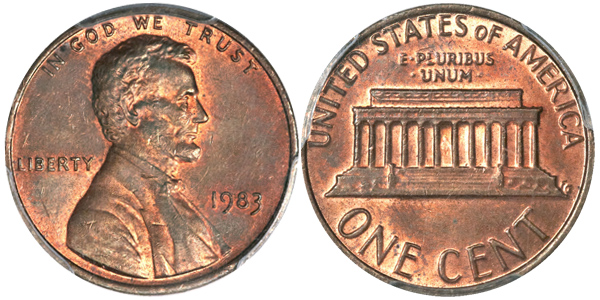
Photo By Heritage Auctions
1988 Reverse of 1989
Starting in 1989, the mint again changed the reverse design of the Lincoln cent. Similar to what happened with 1992 close AM varieties, a few of the 1988 and 1988-D cents were made with the reverse intended for the 1989 (RDV-006) cent.
The best pick up point to identifying this variety is the designers initials FG (Frank Gasparro) on the reverse side, next to the Lincoln memorial. You will need a magnifying glass or loupe to identify the differences between a normal 1988 cent and one with the reverse of the 1989.
The 1988-D is the rarer of the two. There was more than one die used, so if you do find one it would be best to take it to a professional for authentication, and to identify which die variety you have.
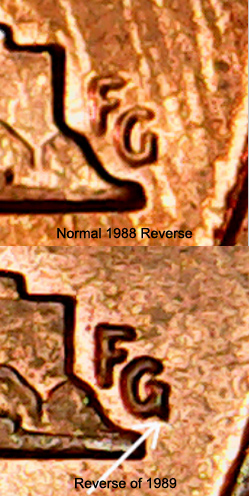
Photos By LincolnCentsOnline
1989 Reverse of 1988
Some collectors have reported finding 1989 Lincoln cents with the RDV-005 reverse intended for 1988 cents. Some experts have dismissed this as being the correct reverse (RDV-006) that has been subject to die polishing, which polished away the serifs from The G on the designer's initials. If this is true, then that would open the door for some of the 1988 cents that have a RDV-006 of 1989 to be more difficult to identify if the dies have been polished.
1990 No "S" Proof Cent
The 1990 no S Proof cent is the only Proof cent in the entire Lincoln cent series that is missing the mint mark.
This cent was struck using a business strike die that had been processed as a Proof die. Business strikes from Philadelphia do not carry a mint mark. There are less than 200 known examples of the 1990 No S Proof cent known. They were issued in regular and Prestige sets.
A genuine 1990 no S Proof cent can be worth over $2000.00
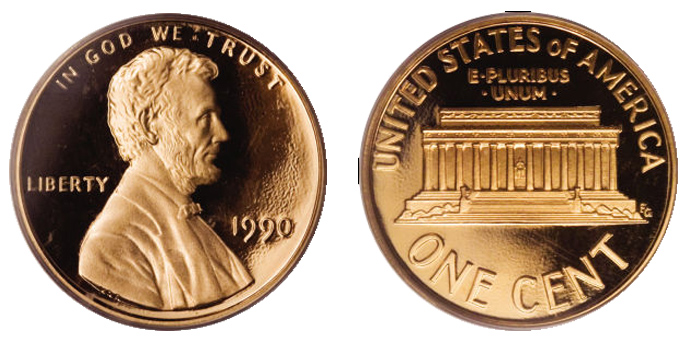
Photo By Heritage Auctions
1992-D Close AM
The 1992 & 1992-D close AM varieties are known as transitional varieties because they have a reverse design that was intended to be used during the following year, but somehow ended up being used early.
They can be easily recognized by the closeness of the A & M in AMERICA on the reverse. On regular issue 1992 cents, the M is more centered between the A & E.
1992-D close AM varieties like the one shown below, have realized over $5000.00 at auction.
To learn more about the close and wide AM varieties, visit this page.
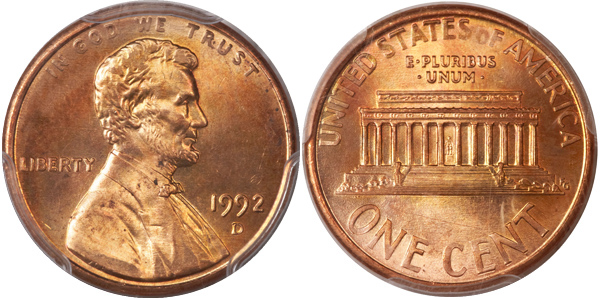
Photo By Heritage Auctions
Next Section